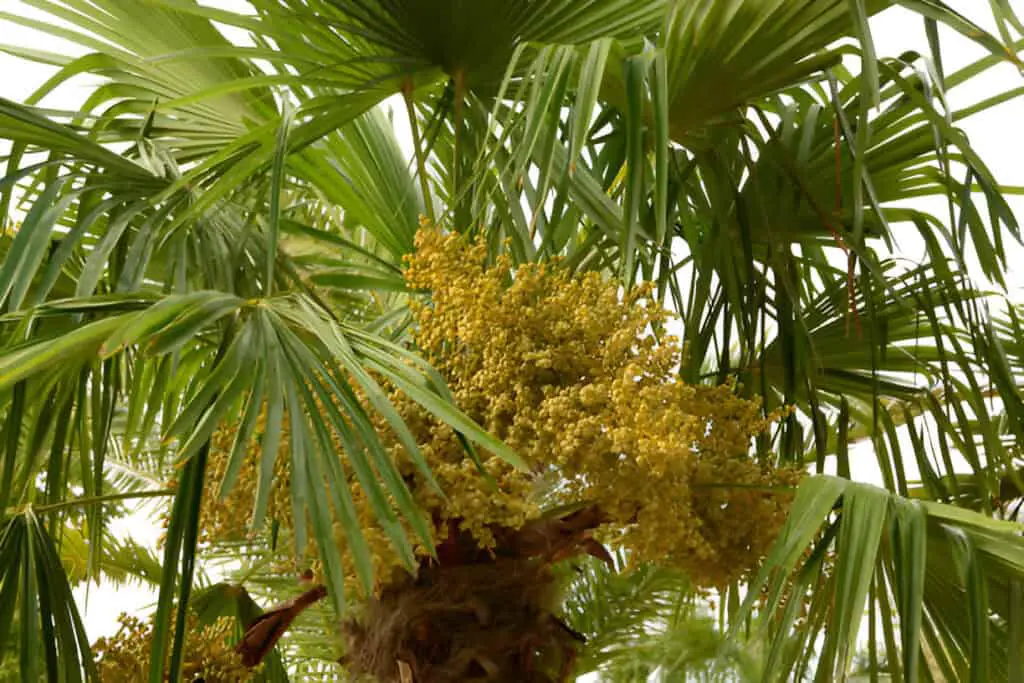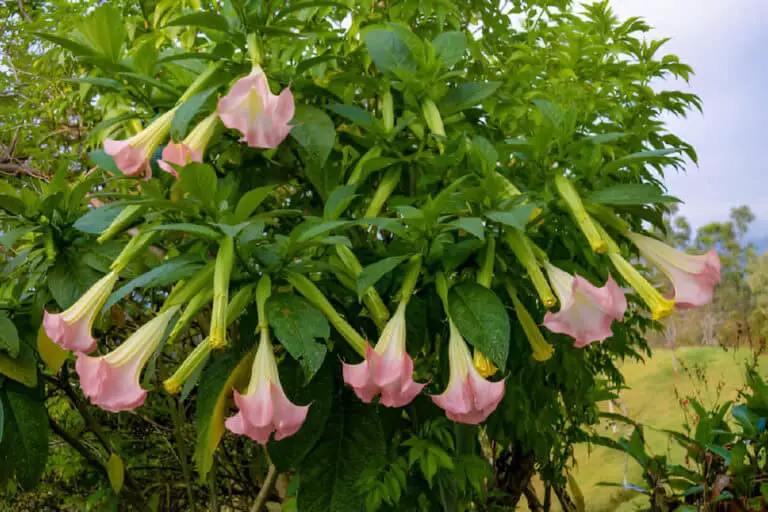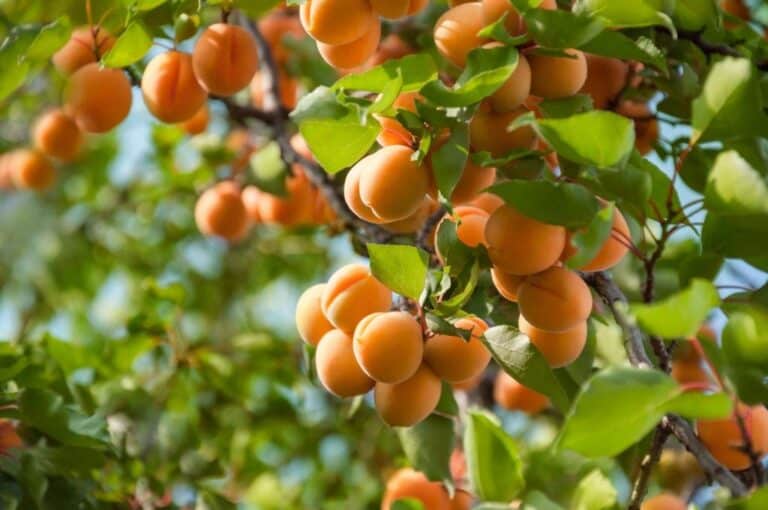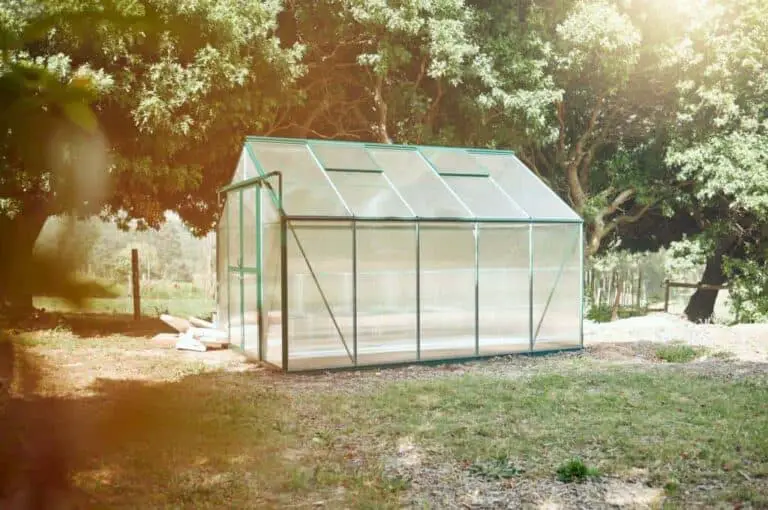Windmill Palm (Trachycarpus Fortunei): Plant Care and Growing Guide

The Windmill Palm, or Trachycarpus fortunei, is popular among gardeners. It’s also called the Chinese Windmill Palm, Chusan Palm, Hemp Palm, and Nepalese Fan Palm.
Best known for its low maintenance and moderate growth, this palm will likely liven up your house (or garden) with its green colored leaves. But, only if you learn how to take proper care of it for it to thrive.
Fortunately, this is exactly what we’ll cover in this Windmill Palm Care Guide. So let’s dive in.
Understanding the Windmill Palm
The Windmill Palm (Trachycarpus fortunei) is a tough palm. It has fan-shaped fronds and a slender trunk wrapped in fibrous material. It brings a tropical vibe to gardens, even in regions with cold winters. This palm can reach heights of up to 40 feet, but it stays compact enough for small yards.
Native to the cool mountains of China and parts of Japan, the Windmill Palm thrives in temperate climates. It prefers partial to full sun and well-drained soil, making it adaptable for many landscapes.
Benefits of Windmill Palms:
- Adds a tropical look to cold climates
- Low maintenance and drought tolerant
- Great for courtyards, patios, or poolside
| Feature | Details |
| Climate | Hardy in zones 7–11 |
| Light | Full sun to partial shade |
| Soil | Well-drained, fertile soil |
With proper care, this palm offers year-round elegance and resilience.
In order to take proper care of your Windmill Palm you’ll need to keep in mind the following guidelines:
- Water: The Windmill Palm prefers constant watering each week and more during the hot season.
- Light: Keep your Trachycarpus Fortunei in an environment where it can receive partial to full sun on a daily basis.
- Soil: Make sure to keep the Windmill Palm in soil with well-draining properties, so ideally, one that is made of sand, chalk, and loam.
And that’s practically it! If you keep these three factors in check, your Windmill Palm will likely have all it needs for it to survive and even thrive.
Scientific / Botanical Aspects

The Windmill Palm is in the Arecaceae family. Its genus is Trachycarpus, and its species is Fortunei. This gives it the scientific name Trachycarpus Fortunei (tray-kee-o-KAR-pos for-TEW-ne-i).
Like other Trachycarpus plants, the Windmill Palm is evergreen. This means it stays green all year in your garden.
Growing Region
The Windmill PalmCentral and eastern China..
As a rule of thumb, remember your plant’s native region and environment. These conditions are what your Windmill Palm is used to, so they are where it thrives best.
The Trachycarpus Fortunei thrives in heat zones 8 to 12. It can handle hardiness levels from 7a to 11b. The best climate for this plant is between zones 4 and 24.
Growth and Size
Growth
In terms of size and growth, the Windmill Palm is a relatively moderate grower, which makes things somewhat easy for any plant enthusiast.
Size
But, how big does the Windmill Palm actually get? What should you expect in terms of size? Let’s dive right in…
The Trachycarpus Fortunei can grow up to 8′ – 10′ (240cm – 3m) in 8′ – 10′ (240cm – 3m) and 4′ – 6′ (120cm – 180cm) in 4′ – 6′ (120cm – 180cm).
The Windmill Palm is quite large compared to other palms. So, remember this when deciding where to place yours at home.
This is why experts recommend keeping an area of approximately 72″ (180cm) free so the Windmill Palm can spread to its best extent.
Water
In terms of watering, the Windmill Palm is a fairly simple plant to take care of.
This is mostly because it has a straightforward watering schedule and somewhat regular watering needs.
Most experts say that Trachycarpus Fortunei likes regular weekly watering. It needs more water in the hot season.
Which is why it is considered a plant with relatively low needs in terms of water.
Watering Windmill Palm
Keep your Windmill Palm in well-draining soil. This helps your plant grow and thrive.
When you consider this, this is why you should aim to choose soil that has good drainage, and moist properties to keep the right moisture levels at all times.
But, if you want a ‘one-size-fits-all’ solution to watering your Windmill Palm then you should consider the famous ‘finger’ test. To perform this test, you just need to put your finger in your plant’s soil and determine if it’s moist or not. If it is, then don’t water; if it isn’t, then please do. In any case, this test will allow you to know if your Windmill Palm needs or does not need water, every time.
Soil Mix for Growing Trachycarpus Fortunei
The Windmill Palm likes soil that drains well and stays moist. So, mix sand, chalk, and loam for the best results.
In addition to this, expert gardeners recommend having preferably alkaline, acid or neutral soil.
Sunlight Exposure and Placement
In terms of light & exposure, the Windmill Palm requires partial to full sun in order for it to thrive under the right conditions.
Most experts agree that this palm will do well as long as you keep it in partial to full sun, and it will be able to grow properly.
We recommend placing your Trachycarpus Fortunei in light to partial shade. This means it should get 2-6 hours of direct sunlight each day. It can also thrive in full sun, which is over 6 hours of direct sunlight daily.
Season
Being an evergreen plant, the Windmill Palm will be present year round in your garden.
You can expect its ‘prime-time’ in spring (early, mid, late), summer (early, mid, late), fall, and winter.
Flowers
You can expect your Windmill Palm to flower around the spring and in the summer months from April to June (spring), and from July to September (summer).
The Windmill Palm produces some beautiful yellow, or gold/yellow and green flowers around this time of year.
Foliage
The leaves from the Windmill Palm have a beautiful green color during most of the year.
In particular, they have a compound (pinnately, bipinnately, palmately) arrangement in its leaves.
Attracts, Tolerance and Resistance
The Windmill Palm is famous for handling drought. So, if dry weather hits, your Trachycarpus Fortunei will be just fine.
Garden
How should you then organize your garden to include your new Windmill Palm? Here are some recommendations by expert gardeners.
Most Trachycarpus Fortunei owners agree that this palm will look great in most rustic, mediterranean and tropical gardens of all types.
Other owners consider that they complement well most gardens of mediterranean garden styles.
The Windmill Palm thrives best in garden beds and borders. It also looks great in patios and containers. Many use it for landscaping in houseplants, coastal areas, rock gardens, poolside, or as a standout specimen.
Companion Plants
Windmill Palm’s do well with some other plants beside it. One good companion plant is the Strelitzia, which will pair up nicely with your leafy friend.
Others consider that a nice Canna will work well too, so choose whichever you find works best for you!
Conclusion
We covered a lot of care tips for your Windmill Palm. But remember the basics: sunlight, soil, and water. These are key to growing a healthy plant at home.






